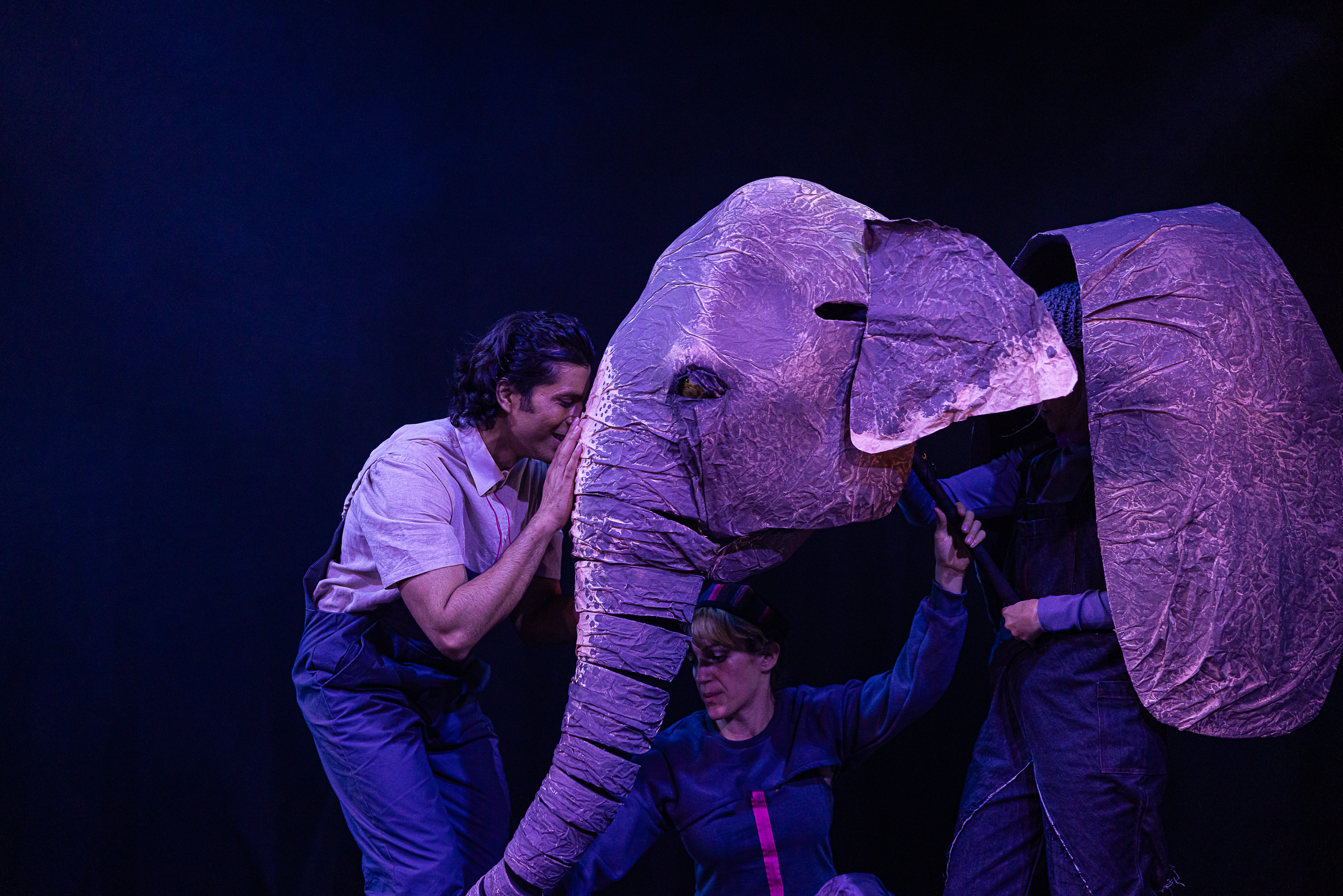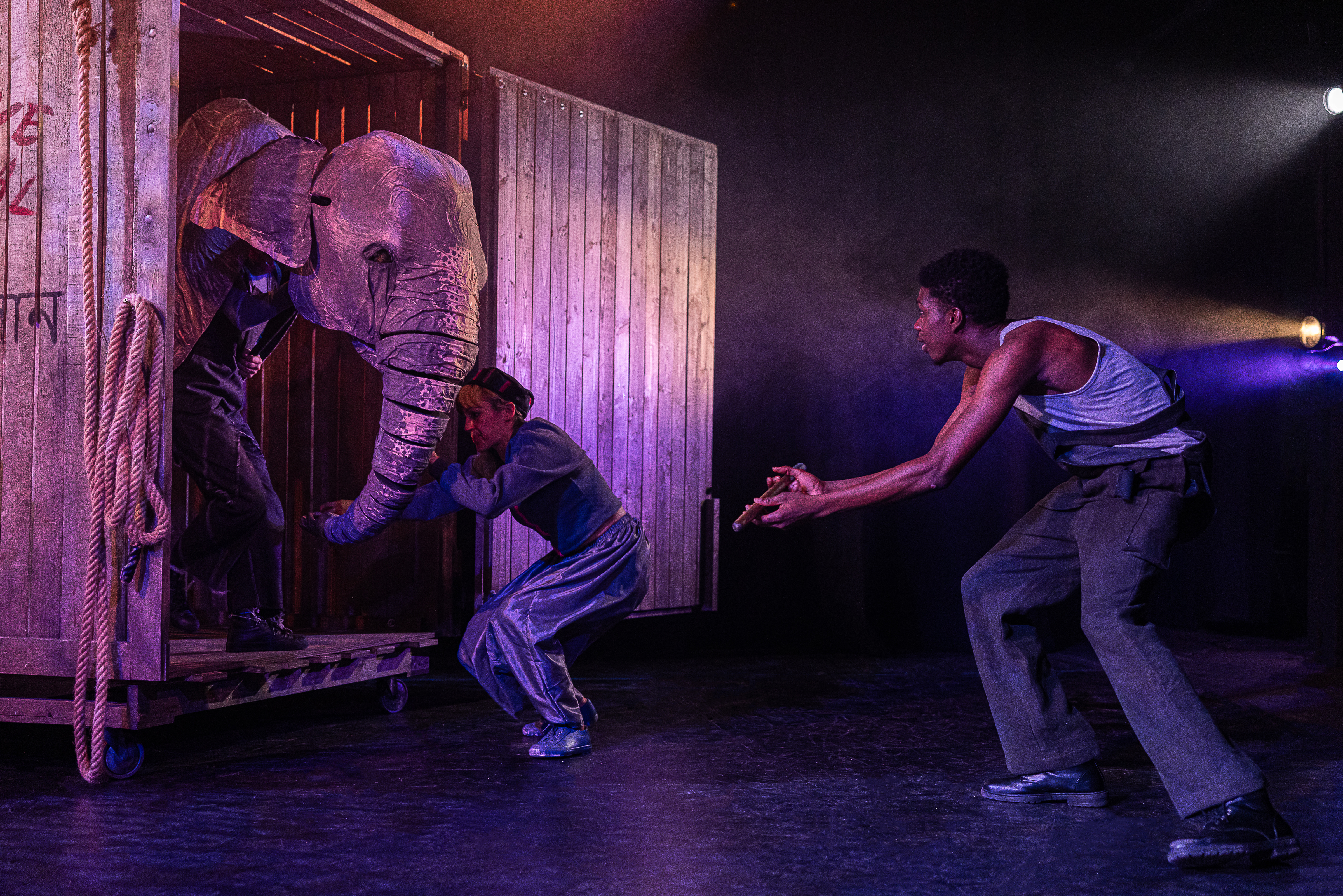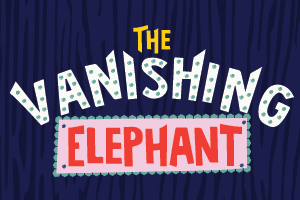Review: A Houdini Magic Act Inspires a Story About the Problem of Animal Abuse in The Vanishing Elephant
The New Victory Theater is running the premiere of Charles Way’s play at its temporary home, Stage 42.

(© Melissa Gordon)
In 1918, Harry Houdini made an 8-foot-tall Asian elephant named Jenny seem to disappear in front of an audience at New York City’s Hippodrome. That famous illusion was the inspiration for Belfast-based Cahoots NI’s The Vanishing Elephant, running at Stage 42 for the New Victory Theater (which is currently undergoing renovations).
But the play isn’t really about Houdini or his feat of magic. In The Vanishing Elephant, playwright Charles Way has taken a fictionalized look at Jenny’s life before she came to New York and told a story about the kind of abuse she may have endured. Using puppetry, music, and dance, director Paul Bosco McEneaney takes a tough subject and thoughtfully shows kids why animals need to be protected by (and from) people.
Way imagines a young boy in India named Opu (Adi Chugh) helping an elephant trainer, Mahout (Madhav Vasantha), with a baby elephant named Janu. Opu teaches her tricks and protects her from Mahout’s rough hand as he and Janu grow up together. But when a circus manager (Shanara Gabrielle) comes across Janu, she wants the elephant for her act in the States. When Janu arrives there, she is renamed Jenny and receives harsh treatment from her trainer Jarrett (Ola Teniola). Many decades later, as Jenny is about to take the stage with Houdini (James Grimm) and his assistant (Philippa O’Hara), she and an elderly Opu (Cliff Samara) reunite.
The Vanishing Elephant is part celebration of the bond between humans and animals, and part cautionary tale about the dangers that animals face from unscrupulous traffickers and audiences hungry for a thrill. Those two ideas, however, don’t always jibe so well, particularly by the end of the show where Jenny is still being exploited, even if it is by a celebrated magician. The message is at best a muddled one.

(© Melissa Gordon)
That quibble aside, The Vanishing Elephant does much to enrich children’s theatrical vocabularies and teach them several of the unique ways that one can tell stories onstage. Jayachandran Palazhy’s opening choreography and composer Aoife Kavanagh’s music introduce the work through an Indian cultural lens along with Way’s poetic language, while Simon Bond’s shadowy lighting and Sabine Dargent’s set and costumes whisk us across continents and spans of time in the blink of an eye.
But the real highlight is watching Jenny grow in a series of increasingly large elephant puppets (designed by Helen Foan), which show Jenny from her birth (where she appears as a small shadow puppet) to her old age (a life-sized elephant convincingly operated by Iris Schmid and Ashleigh Cheadle), along with several different sizes in between. Children in the audience at the performance I attended were most engaged when a new Jenny appeared.
That’s not to say that they were always engaged. Despite some attempts at humor in Way’s script, the jokes rarely land, and that can be lethal in a show geared toward kids. Director McEneaney hasn’t quite found the formula to inject levity into this heavy theme. Nonetheless, The Vanishing Elephant‘s theatricality and overall message about caring for animals is a good jumping-off point for conversations at home and is worth the 70-minute visit to Stage 42.









